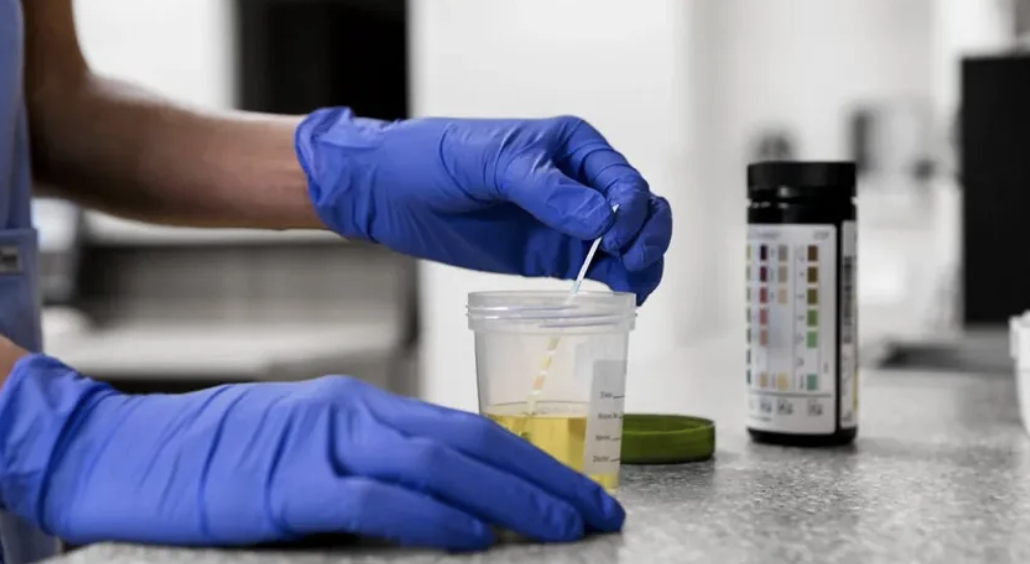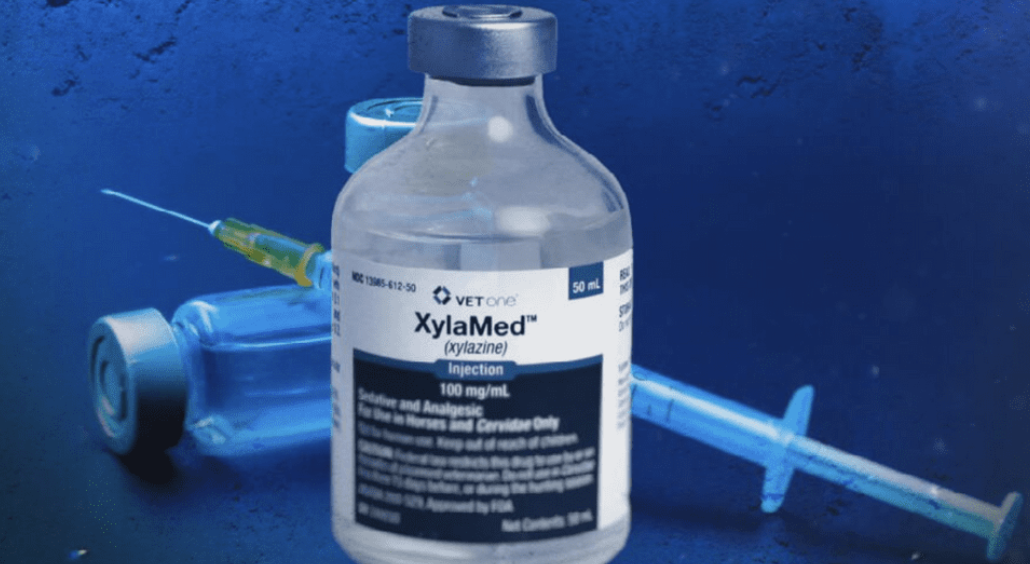Gaming addiction, often referred to as internet gaming disorder, is a condition where an individual’s excessive engagement with video games disrupts daily functioning. This uncontrollable habit can negatively affect several areas of life, such as relationships, education, work, and overall well-being.
The symptoms of gaming addiction typically include a preoccupation with games, irritability when unable to play, fatigue due to sleep deprivation, spending increasingly more time gaming, and withdrawal from social interactions with family and friends. As the addiction progresses, these behaviors intensify, causing further harm to the individual’s life.
The causes of gaming addiction are multi-faceted. Addictive game design, which incorporates elements that encourage prolonged play (like rewards, challenges, or social interactions), can trigger compulsive behaviors. Additionally, a strong desire to escape from reality, the need for social acceptance, and underlying mental health conditions such as anxiety or depression can all contribute to the development of gaming addiction.
The effects of gaming addiction can be far-reaching. Prolonged gaming can lead to sleep deprivation, poor eating habits, and a decline in physical health. Social skills may deteriorate due to isolation from family and friends, while personal relationships can suffer due to the individual’s prioritization of gaming over real-life interactions. Financial difficulties can also arise when individuals spend large amounts of money on in-game purchases or gaming equipment. If not addressed promptly, gaming addiction can result in long-term consequences that affect an individual’s overall quality of life.
What is gaming addiction?
Gaming addiction, officially recognized as gaming disorder by the World Health Organization (WHO), is a form of behavioral addiction marked by persistent and compulsive gaming behavior that disrupts daily functioning. This condition applies to both online and offline games and is diagnosed when gaming behavior interferes with personal, social, educational, or occupational responsibilities over an extended period.
The disorder is defined by three core symptoms:
- Impaired control over gaming: Difficulty limiting the frequency, duration, or intensity of gaming sessions.
- Gaming takes priority: Gaming becomes more important than other daily activities and obligations, including work, school, or relationships.
- Continued gaming despite harm: Individuals persist in gaming even when it leads to negative consequences such as social withdrawal, academic failure, job loss, or health problems.
According to a systematic review by Rosendo Ríos-Trott et al., titled “Online Gaming Addiction: A Systematic Literature Review”, gaming addiction involves recurrent use of the internet to engage in games, often leading to distress and impairment across multiple areas of life.
There is no universally defined number of hours that constitutes addiction. However, playing more than 4–5 hours per day on a consistent basis may be a red flag, especially if accompanied by neglect of responsibilities, isolation, mental health issues, or unsuccessful efforts to cut back. Clinically, gaming addiction is identified not just by time spent, but by the loss of control and the negative impact it has on overall functioning.

Is gaming addiction real?
Yes, Gaming addiction is a real and clinically recognized behavioral disorder. The World Health Organization (WHO) officially included gaming disorder in the ICD-11 as a diagnosable condition in 2019. It is defined by a pattern of persistent or recurrent gaming behavior that takes precedence over other interests and daily activities, resulting in significant impairment in personal, social, educational, or occupational functioning.
Scientific research also supports its legitimacy. According to a study cited by Rosenberg in “Is Video Game Addiction Real?”, approximately 8.5% of youth gamers meet the criteria for pathological or clinically “addicted” gaming. These individuals exhibit symptoms such as loss of control, preoccupation with gaming, withdrawal-like behavior, and continued play despite harm, mirroring the core characteristics of other behavioral addictions.
While not everyone who plays video games excessively is addicted, those who experience functional impairment, distress, and loss of control over their gaming behavior may meet the criteria for gaming disorder and require professional support.
What causes gaming addiction?
The causes of gaming addiction are multifaceted, involving a combination of biological, psychological, and social factors that contribute to the development and persistence of compulsive gaming behaviors.
Biological Factors: Biological factors play a crucial role in gaming addiction, especially related to the brain's response to gaming. Video games are designed to be immersive and rewarding, leading to the production of high levels of dopamine, which can contribute to patterns resembling dopamine addiction. As a result, the brain may adapt by reducing dopamine receptors, making the brain less sensitive to dopamine. This change can increase the desire to engage in gaming repeatedly to achieve the same pleasurable sensations. The strong neurobiological drive to seek these experiences again can lead to addictive patterns of behavior.
Psychological Factors: Psychological factors, including the need for escapism and underlying mental health disorders, are significant contributors to gaming addiction. People who experience anxiety, depression, or other emotional difficulties may turn to video games as a form of escape. Gaming offers an opportunity to disconnect from real-life problems and emotions, providing a temporary distraction. For individuals with existing psychological conditions, gaming becomes a coping mechanism, reinforcing the cycle of addiction.
Social Factors: Social influences also play a role in gaming addiction. Video games provide instant gratification, feedback, and rewards, which are often more easily achievable compared to real-life situations. This instant satisfaction can make gaming more appealing, especially for individuals who struggle with self-esteem or need external validation. The social aspects of gaming—such as online communities and multiplayer experiences—can also encourage addiction. The sense of belonging and recognition that players receive in the virtual world can make gaming feel more rewarding than real-world social interactions, further reinforcing the cycle of addiction.
These factors combined create an environment where gaming can become compulsive and uncontrollable, leading to significant negative impacts on an individual’s daily life, relationships, and overall well-being.

What age groups are mostly addicted to gaming?
The age groups most affected by gaming addiction are adolescents and young adults, particularly those between the ages of 16 and 25. Research indicates that this demographic shows the highest prevalence of problematic gaming behaviors.
A study by Pawłowska and Potembska found that teenagers aged 16 to 19 years are especially vulnerable, with varying levels of addiction severity (mild, moderate, and severe). Similarly, a review summarized by Griffiths showed that most gaming addiction studies involved individuals with a mean age of 25 years or younger, highlighting the concentration of this issue in youth and emerging adulthood.
In adults, the trend continues into early adulthood. According to a study by Neily and Maalej, 25.7% of adults aged 18 to 40 were classified as addicted gamers, with a higher prevalence among males. Several factors contribute to higher addiction rates in these age groups:
- Neurological development: Adolescents and young adults have developing brains, particularly in areas related to impulse control and decision-making, making them more susceptible to compulsive behaviors.
- Emotional regulation: Younger individuals often use gaming as a coping mechanism for stress, anxiety, loneliness, or boredom.
- Social reinforcement: Online games provide instant feedback, rewards, and a sense of belonging, appealing to youth seeking social validation or escape.
- Increased access and exposure: This age group typically has more free time, fewer responsibilities, and greater exposure to digital platforms and gaming communities.
These combined factors create an environment where gaming can easily shift from a hobby into a behavioral addiction requiring structured intervention.
What are the effects of gaming addiction?
The effects of gaming addiction are wide-ranging and can have serious consequences, impacting various aspects of an individual's life, including physical, emotional, mental, and social well-being.

Physical Effects:
- Sleep Disturbances: Gaming addiction often leads to disrupted sleep patterns, with increased sleep disturbances, reduced sleep duration, and poor sleep quality. This can cause significant daytime dysfunction, impairing overall health and productivity.
- Headaches: Prolonged gaming sessions can lead to frequent headaches, often due to poor posture, eye strain, or dehydration.
- Sedentary Lifestyle: A lack of physical activity due to extended gaming can contribute to various health issues, such as obesity, poor cardiovascular health, and increased risk of chronic diseases.
- Hand and Wrist Injuries: Repetitive motions from excessive gaming can lead to injuries such as carpal tunnel syndrome or other musculoskeletal problems.
Emotional Effects:
- Increased Emotional Difficulties: Gaming addiction can exacerbate emotional challenges, particularly the inability to cope with negative emotions like sadness, frustration, or loneliness. The lack of real-life social connections can intensify these feelings, leading to emotional instability.
- Social Isolation: As gaming addiction progresses, individuals may withdraw from family, friends, and social activities, further deepening feelings of loneliness and emotional distress.
Mental Effects:
- Cognitive Decline: Prolonged gaming addiction can impair cognitive functions such as memory, attention, and concentration. The overstimulation from gaming environments may make real-life tasks feel less engaging and harder to focus on, leading to difficulties in academic or professional settings.
- Decreased Motivation: This loss of interest in real-life challenges is often seen in individuals who show signs of impulse control disorder, where short-term rewards take priority over long-term goals
Psychological Effects:
- Increased Anxiety and Depression: Gaming addiction is often associated with heightened anxiety, depression, and mood swings. The inability to manage emotions can lead to irritability and a loss of self-worth.
- Relationship Issues: Addictive gaming behavior can lead to strained relationships with family, friends, and romantic partners. These issues may worsen existing mental health problems, creating a cycle of worsening emotional and psychological distress.
- Escapism and Coping: Individuals with mental health challenges may turn to gaming as a way to cope with difficult emotions, further exacerbating their condition.
Short-Term Effects:
- Hunger and Poor Hygiene: Gamers may neglect basic needs such as eating and personal hygiene due to their focus on gaming, leading to physical discomfort and a decline in overall health.
- Fatigue and Eye Strain: Long gaming sessions can result in fatigue, as well as eye strain due to prolonged screen exposure.
- Missing Social Events: As gaming takes priority, individuals may miss family gatherings and social events, leading to isolation and strained relationships.
Long-Term Effects:
- Financial and Occupational Consequences: Prolonged gaming addiction can result in financial ruin due to neglecting work or academic responsibilities. It can also lead to unemployment, academic failure, or expulsion from institutions.
- Health Risks: The sedentary nature of gaming can contribute to serious long-term health risks, such as diabetes, heart disease, and respiratory problems. A lack of physical activity can also affect overall longevity and quality of life.
- Increased Aggression: Some individuals may develop aggressive or violent tendencies as a result of excessive gaming, especially in games that involve intense competition or violent content.
Is gaming addiction fatal?
Yes, in extreme cases, gaming addiction can be fatal. Although it is primarily a behavioral and psychological disorder, it can lead to death when prolonged gaming results in severe physical neglect. Extended gaming sessions without breaks, proper hydration, sleep, or nutrition can cause life-threatening conditions such as cardiac arrest, deep vein thrombosis (DVT), and dehydration. Real-world cases highlight this danger. In South Korea in 2005, a 28-year-old man died of heart failure after playing an online game for nearly 50 continuous hours.
In Taiwan in 2012, a 23-year-old gamer died from cardiac arrest after playing for 23 straight hours in an internet café. In the UK, a 20-year-old student, Chris Staniforth, died from a blood clot caused by DVT after playing Xbox for hours without moving. These cases show that while gaming addiction does not directly cause death, the physical consequences of compulsive, unbroken gaming behavior, especially when combined with sleep deprivation and lack of movement, can be fatal.

What are the signs and symptoms of gaming addiction?
The signs and symptoms of gaming addiction that indicate problematic gaming behavior are critical to recognize, as early intervention can prevent long-term negative consequences. Here are the key signs and symptoms:
Primary Signs of Gaming Addiction:
- Preoccupation with Game-Playing: Excessive focus on gaming, thinking about the next session, or daydreaming about video games during other activities. This distraction interferes with other important areas of life.
- Increased Time Spent Gaming: A need to spend increasing amounts of time gaming due to developing a tolerance for the dopamine rush associated with gaming. This behavior typically occurs when the person no longer feels the same level of pleasure from shorter gaming sessions.
- Fatigue and Exhaustion Due to Lack of Sleep: Consistent sleep deprivation from long gaming sessions results in tiredness, lack of energy, and difficulty functioning during daily activities.
- Social Isolation: Withdrawal from family and friends, as gaming becomes the primary focus and social interactions in the real world take a backseat.
- Irritability When Unable to Play: Signs of frustration, anxiety, or restlessness when gaming is not available or when there is an interruption in gaming time.
- Lying About Gaming Habits: To conceal the extent of their gaming behavior, individuals may lie or downplay the amount of time spent gaming, especially when they feel guilty or ashamed of their addiction.
- Neglect of Responsibilities: A decline in academic, work, or home responsibilities due to the compulsive nature of gaming. This may result in falling behind on tasks or facing negative consequences, such as poor performance or even job loss or expulsion from school.
Other Possible Symptoms of Gaming Addiction:
- Deteriorating Personal Hygiene: Neglecting personal grooming, cleanliness, and hygiene due to the obsession with gaming, which could indicate self-neglect.
- Loss of Interest in Other Activities: Losing interest in hobbies, activities, or passions that were once enjoyable before the gaming addiction took hold.
- Unsuccessful Attempts to Cut Down Gaming: Despite efforts to reduce gaming time, the individual may be unable to control or limit their gaming behavior, reflecting a lack of control.
- Using Games to Relieve Negative Emotions: Turning to video games as a way of escaping from real-life stressors, negative emotions, or mental health challenges, like anxiety or depression.
- Playing Despite Negative Consequences: Continuing to play video games even when it leads to harmful physical or psychological effects, such as health problems, emotional distress, or deteriorating relationships.
How to beat gaming addiction?
Overcoming gaming addiction requires a comprehensive approach that includes acknowledging the problem, developing healthier habits, and implementing effective strategies for control. Here are some key steps and tips for overcoming gaming addiction:
Steps to Overcome Gaming Addiction:
- Acknowledge the Problem: Recognizing that gaming has become an issue and negatively impacts various aspects of life is the first and most important step in overcoming gaming addiction.
- Set Time Limits: Establish strict time limits for gaming, such as limiting gaming sessions to no more than two hours per day. You can use timers on mobile phones or devices to track playtime. This helps prevent excessive screen time and allows for a more balanced routine.
- Identify Triggers: Recognize the underlying reasons why you turn to gaming. Is it a way to escape stress, boredom, or negative emotions? Identifying triggers will allow you to replace gaming with healthier coping strategies.
- Find Alternative Activities: Discover fun and fulfilling activities outside of gaming, such as hobbies, exercise, reading, or spending time with friends and family. Engaging in alternative activities can provide a positive distraction and reduce the temptation to game.
- Develop Healthier Coping Strategies: Since gaming is often used as a means of escape, it is essential to develop healthier ways to cope with stress and negative emotions. Techniques such as mindfulness, meditation, journaling, or talking to a therapist can help manage stress without resorting to gaming.
- Establish a Routine: Create a balanced daily routine that includes time for work, physical activity, social interactions, and relaxation. A structured routine can reduce the likelihood of turning to gaming as a way to fill gaps in your schedule.
- Seek Professional Help: In cases of severe addiction, professional medical or psychological interventions may be necessary. Therapy, counseling, and support groups can provide valuable guidance in overcoming gaming addiction and managing the underlying issues.
What increases the risk of gaming addiction?
Several risk factors increase the likelihood of developing a gaming addiction. These include:
Being Male: Studies show that males are more likely to engage in gaming and are at a higher risk of developing gaming addiction compared to females.
Aggressive Behaviors: Exposure to violence and competition in many online games can lead to an increase in aggression and a higher risk of addiction, especially for individuals who already exhibit aggressive behaviors.
Dysfunctional Impulsivity: Individuals with high levels of impulsivity may be more prone to addictive behaviors. Those who act without considering the consequences of their actions may engage in excessive gaming despite the negative impacts on their health and well-being.
Lack of Social Skills: Gaming addiction often weakens social skills and reduces real-life social interactions. Individuals with poor social competence may use gaming as an alternative to real-life connections.
Poor Emotional Regulation: People who struggle to regulate their emotions are more likely to turn to gaming as a coping mechanism. Similar to phone addiction, gaming provides an escape from negative feelings, but it can worsen emotional difficulties over time.
By understanding these risk factors and taking proactive steps to manage gaming behavior, individuals can reduce their vulnerability to gaming addiction and improve their overall well-being.
How do you treat gaming addiction?
Gaming addiction can be treated using several approaches that address the psychological, behavioral, and physical aspects of the addiction. Below are some of the key treatment methods:
- Counseling and Psychotherapy: Individual Counseling: One-on-one therapy sessions help individuals set achievable goals for overcoming gaming addiction. These sessions aim to uncover the underlying factors contributing to excessive gaming, such as emotional distress, trauma, or social issues.
- Family Therapy: Family therapy can be vital in cultivating a supportive home environment for the recovering individual. It allows family members to understand the addiction and develop strategies to assist in the recovery process.
- Cognitive Behavioral Therapy (CBT): CBT is one of the most effective forms of psychotherapy for gaming addiction. According to research by Dr. Lucio Gros and colleagues, CBT helps individuals identify and challenge the thoughts and behaviors that fuel their addiction. It assists in distinguishing between the desire for relief and true happiness, thus reducing the reliance on gaming to escape negative emotions. CBT also focuses on developing healthier coping mechanisms for dealing with stress and anxiety.
- 12-Step Programs: Computer Gaming Addicts Anonymous (CGAA) and Online Gamers Anonymous are peer-support groups based on the 12-step model. These programs provide a safe space for individuals to share their experiences and support one another in their recovery. Regular meetings and a structured course of action help individuals reduce their dependence on gaming and work toward recovery.
- Medication for Co-occurring Disorders: If a gaming addict has co-occurring psychological conditions such as anxiety, depression, or bipolar disorder, medications like antidepressants and anxiolytics may be prescribed. Treating these underlying mental health issues can improve the effectiveness of other treatment approaches and support overall recovery.

Why is gaming so addictive?
Gaming is addictive for several reasons, many of which are related to the brain's reward system:
- Dopamine Release: Video games trigger the release of dopamine, a neurotransmitter associated with pleasure, reward, and motivation. Just like addictive substances, gaming can stimulate areas of the brain involved in craving and reward processing. In fact, the release of dopamine during gaming is comparable to the effects of stimulant drugs, leading to reinforcement of the behavior.
- Hyperarousal and Engagement: The immersive and stimulating nature of video games can lead to hyperarousal, which further heightens the desire to play. Engaging game mechanics, rewarding systems, and visually stimulating graphics can make it difficult for players to stop playing, as the brain continuously seeks the rewarding sensations.
- Game Design: Video game developers design games to keep players engaged, often incorporating elements such as:
Stimulating Graphics: High-quality visuals make the gaming experience more engaging.
Reward Systems: Players are often rewarded with new levels, items, or achievements, which trigger further dopamine releases and encourage continued play.
Social Features: Many games involve multiplayer options or online communities, making players feel a sense of belonging and social validation. - Psychological and Emotional Escape: Many individuals turn to gaming to escape from real-life problems, stress, or negative emotions. The immersive world of games can serve as a distraction from feelings of loneliness, anxiety, or depression.
How to help your loved one recover from gaming addiction?
Helping a loved one recover from gaming addiction requires patience, empathy, and consistent support. Whether it’s your child, spouse, or sibling, the first step is to acknowledge the problem without judgment, approach the conversation with care, focusing on concern rather than blame.
Share specific examples of how their gaming has affected relationships, responsibilities, or health. In many families, creating structured routines has been key to recovery, setting time limits for screen use, reintroducing family meals without devices, or encouraging shared offline activities like walks, board games, or sports can help shift focus away from gaming. For children, many parents have found success by using parental control tools to manage gaming hours and by rewarding non-screen activities with praise or privileges.
For adults, especially spouses, the path is more collaborative, support them in finding healthy stress relievers like exercise, hobbies, or even therapy. If gaming is used as an emotional escape, encouraging counseling or joining them in therapy can address underlying issues. In more severe cases, structured digital detox programs or behavioral therapy may be necessary.
Above all, celebrate small wins and stay consistent; relapses can happen, but a supportive, non-critical environment can make the difference between resistance and recovery.
When is counseling for gaming addiction necessary?
Gaming addiction counseling is necessary when excessive gaming interferes with normal functioning and jeopardizes various aspects of life. If gaming begins to negatively affect work, school, relationships, or physical and mental health, it may be a sign that professional help is required. Counseling is also important to educate individuals about their condition and provide emotional support during critical recovery phases.
Therapy can be conducted in groups or with family members. Group therapy involves peer groups where individuals with gaming addiction can share experiences, discuss their challenges, and receive advice and feedback. Family counseling is equally essential, as it helps family members understand the addiction and learn ways to work together to support recovery. Additionally, it addresses the issues that may have arisen within the family due to the addiction.
What are the withdrawal symptoms of gaming addiction?
The symptoms of gaming addiction withdrawal can vary in intensity and may include both physical and psychological effects. Common symptoms include:
- Anxiety – A sense of restlessness or nervousness, especially when unable to play games.
- Increased Irritability – Frustration or anger when gaming is not available.
- Headaches – Physical discomfort, often associated with a lack of screen time.
- Sleeplessness – Difficulty sleeping or maintaining a regular sleep schedule after stopping gaming.
- Aggressive Behaviors – Heightened aggression or mood swings due to the inability to game.
- Emotional Outbursts – Intense emotional reactions like crying or feeling overwhelmed as a result of withdrawal.
These symptoms typically occur when someone who is addicted to gaming reduces or stops their gaming habits and can last for a varying period of time, depending on the severity of the addiction.
Can gaming addiction lead to depression?
Yes, gaming addiction can contribute to depression, and it often creates a cycle where both conditions worsen each other. Here’s how:
- Social Isolation: Gaming addiction frequently leads to social withdrawal, as individuals may prioritize gaming over relationships. This isolation can increase feelings of loneliness, a known risk factor for depression.
- Exacerbation of Existing Mental Health Issues: For those with pre-existing mental health conditions, such as anxiety or depression, excessive gaming can make these issues worse. The virtual world may offer temporary relief or escapism, but it doesn't address the root causes of the emotional struggles, leading to more profound feelings of sadness, hopelessness, and isolation.
- Avoidance of Real-Life Problems: Gaming addiction often becomes a coping mechanism for people dealing with stress, trauma, or unresolved emotional issues. Instead of confronting the underlying causes of their depression, individuals may escape into gaming, which can further entrench feelings of helplessness and despair.
- Negative Impact on Daily Life: Gaming addiction can disrupt normal routines, including work, education, and personal relationships. These disruptions can lead to feelings of failure or inadequacy, which can trigger or worsen depression.
Thus, gaming addiction and depression often exist in a feedback loop where one condition fuels the other, creating a cycle that's hard to break without intervention.
Is gaming addiction a disability?
Yes, in some cases, gaming addiction can be considered a disability. Gaming addiction, formally recognized as gaming disorder by the World Health Organization (WHO) in the ICD-11, can cause serious functional impairments that interfere with a person’s ability to perform daily activities, maintain employment, or engage in healthy social relationships.
According to research by Bhang et al., the ICD-11 emphasizes that gaming disorder involves long-term, excessive gaming that results in substantial impairment in personal, social, or occupational functioning, a hallmark characteristic of many disabling conditions.
Furthermore, a study by Fujino et al. found that gaming disorder is associated with executive function dysfunction and abnormalities in reward processing systems in the brain, suggesting that it may involve neurological changes similar to those seen in substance use disorders. These disruptions can lead to impaired decision-making, emotional regulation, and impulse control, which may severely limit a person's ability to manage everyday tasks or responsibilities.
How does excessive gaming impact young people?
Gaming can have significant negative effects on youth, impacting both their physical and mental health in various ways. Chronic exposure to video games, particularly when it becomes addictive, can result in a range of concerns that affect various aspects of a young person’s life. Some of the key issues that have been highlighted include:
- Weaker Social Skills: Youth who spend excessive amounts of time gaming may struggle to develop or maintain face-to-face relationships. This can result in a lack of social skills, difficulty in communicating with peers, and increased isolation.
- Impaired School Performance: Time spent gaming often leads to neglecting academic responsibilities, which can result in poor school performance, reduced focus, and a lack of interest in education. This is often compounded by a tendency to prioritize gaming over homework or study time.
- Sedentary Lifestyle: Prolonged gaming sessions lead to physical inactivity, contributing to an increased risk of obesity, poor cardiovascular health, and a range of other health issues related to a sedentary lifestyle.
- Lack of Sleep: Gaming late into the night disrupts sleep patterns, leading to sleep deprivation. Poor sleep can have serious consequences on a young person’s mood, cognitive function, and overall well-being.
- Inability to Manage Emotional Responses: Youth addicted to gaming may struggle with emotional regulation, becoming more prone to frustration, anger, and emotional outbursts when they are unable to play or face challenges in their gaming environment.
- Increased Aggression: Studies have shown that exposure to violent video games can increase aggressive thoughts, feelings, and behaviors in youth, as they may become desensitized to violence or view it as an acceptable way to resolve conflicts.
- Manipulative Behavior and Pathological Lying: In some cases, young gamers may become manipulative, lying about the time spent gaming or hiding gaming behavior from parents or authorities. This is often done to protect the gaming habit and avoid restrictions.
- Bullying: Online gaming communities, particularly those that are highly competitive or have unsupervised interactions, may lead to bullying, both as a victim and a perpetrator. This can further damage a young person’s self-esteem and social relationships.
What are some helpful books to quit gaming addiction?
Books that address gaming addiction offer insights into the psychological roots of compulsive gaming and provide practical strategies to regain control. These resources can be especially valuable for individuals seeking to understand their behavior, develop healthier habits, and rebuild structure in their lives. Below are some well-regarded books that help people quit or manage gaming addiction:
- “Digital Minimalism” by Cal Newport: Explores how to live a focused life in a noisy digital world, offering principles and practices to reduce screen dependency, including gaming.
- “Irresistible: The Rise of Addictive Technology and the Business of Keeping Us Hooked” by Adam Alter: Breaks down how digital platforms, including games, are designed to be addictive, and how to reclaim attention and time.
- “Reset: Gaming and the Toxic Gamer Culture” by Jasmine Henry: Addresses the culture and personal consequences of compulsive gaming, offering strategies for reflection and recovery.
- “Glow Kids” by Nicholas Kardaras: Written by a clinical psychologist, this book focuses on how screen addiction affects children's brains and offers guidance for parents seeking to reduce gaming time.
- “The Power of Habit” by Charles Duhigg: Not gaming-specific, but an excellent resource to understand habit loops and how to replace unhealthy routines like gaming with productive alternatives.
- “Hooked on Games” by Andrew P. Doan, MD, PhD: Written by a neuroscientist and former gamer, this book provides personal insight and medical perspectives on video game addiction, along with recovery advice.
- “Game Quitters' Reclaim Program” by Cam Adair (available via GameQuitters.com): A structured guide and community-driven program to help people quit gaming, based on lived experience and behavior change techniques.
These books are useful not only for individuals facing gaming addiction but also for parents, partners, and therapists who want to support someone through recovery.
















